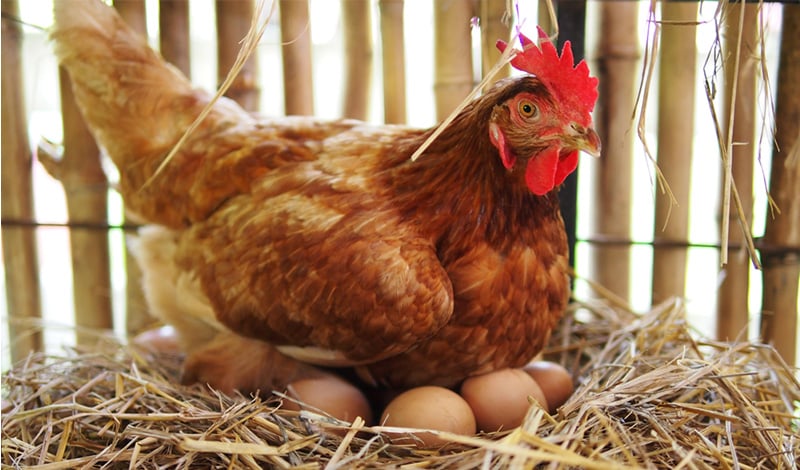

How to Get Your Flock to Produce Eggs Year-Round
Keep your fridge full of fresh, healthy eggs year in and year out by artificially altering the crack of dawn.
A steady supply of fresh eggs makes the fun of raising chickens even more worthwhile. However, if a healthy stream of nutritious eggs is your primary motivation, follow these tips to get the most out of your hens all year, including the dark winter months when hens tend to slow or stop laying.
Select Strong Egg Layers
Some chicken breeds are egg-laying machines. Others, not so much. Young hens are more productive than older hens. So, knowing that basic math, choose egg-laying breeds with the expectation their first two to three years will be the most productive. For help selecting a productive chicken breed that works for you, see the section below on chicken breeds.
Use Supplemental Light
When daylight falls under 15 hours a day, adding artificial light will stimulate many hens to hold to a nesting box and keep laying. Turning on artificial light in the morning, either with an automatic timer or manually, will create a 15-hour daylight scenario that keeps hens laying eggs. Schedule the light to turn on 15 hours before sunset each day. Chickens naturally roost with the setting sun, so avoid adding artificial light at nightfall. You can find daily sunset times online or through a local news resource.
A Safe Light Is Best
Incandescent or fluorescent bulbs provide adequate light and are effective for warming a coop, but they can get very hot, presenting danger in even the safest coop laden with dry straw or pine shavings. However, low-wattage bulbs secured in a sturdy brooder clamp or LED light panels placed above the coop floor generally produce enough light to keep hens stimulated to lay eggs.
Nutrition is Key
Happy chickens lay eggs, and well-fed and -watered chickens are the happiest. So, supplement your hens' protein- and calcium-rich feeds with high-calorie food such as cracked corn. Feeding corn just before the hens head up to roost provides extra calories, helping to keep the birds warm through the night as they digest the corn. When the light flips on in the morning, the warm and happy birds will be ready to get to work laying eggs. And remember, hens need fresh water every day. So, keep water from freezing with the help of a water-heating system.
Chicken Breeds That Lay Lots of Egg
- Leghorn: Up to 250 white eggs per year
- Rhode Island Red: Up to 250 brown eggs per year
- Maran: Up to 200 dark-brown eggs per year
- Red Star/Black Star: Up to 300 brown eggs per year
- Ancona: Up to 220 white eggs per year
- Buff Orpington: Up to 200 light-brown eggs per year
- Barnevelder: Lays 200 chocolate-brown eggs per year
- Hamburg: Up to 200 small white eggs per year
- Barred Rock: Up to 220 brown eggs per year
- Sussex: Up to 250 light-brown eggs per year
- Hybrid: Up to 280 eggs per year. Egg color depends on hybrid.
Related Articles

Chickens
Advanced Chick Nutrition: The Secret to Great Laying Hens
You’ve heard the saying, “You are what you eat.” Nutrition matters...
Read More

Chickens
Good Supplements for Healthier Chickens & Prettier Eggs
The shell of each egg that your hens lay is made up of nearly 95% calcium carbonate...
Read More

Chickens
Nine Reasons Hens Stop Laying Eggs
Some of the most common reasons for decreased egg production to put your mind at ease...